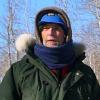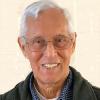Project Jukebox Survey
Help us redesign the Project Jukebox website by taking a very short survey!
The Dangerous Ice Project Jukebox is a National Science Foundation funded project at the University of Alaska Fairbanks (Award Number 0909517). The goal is to understand changing ice conditions on the Tanana River through the combined knowledge of scientists and experienced local river travelers.
Over the winters of 2005-2007 and 2010-2013, groups of river travelers and scientists traveled to potentially hazardous places on the Tanana River near Fairbanks, Manley Hot Springs, and Tanana to document ice conditions and/or measure air temperature, ice thickness, and water temperature, depth and chemical composition. Photo and video documentation of our site visits can be found by clicking on the orange point markers on the map below.
Local experts have provided historical perspective, personal experience, and traditional knowledge about the ever-changing Tanana River. Scientific research is adding information about the dynamics of the river system and the influence of groundwater upwelling on ice conditions. A booklet explaining ice dynamics and travel advice offers information to the general public about how to avoid trouble during winter travel.
This has been a joint project between Elmer E. Rasmuson Library and the Institute of Arctic Biology at the University of Alaska Fairbanks. The Dangerous Ice Project Jukebox was originally created in 2007 in HTML and in 2013 was expanded and upgraded to Drupal. The information in this project reflects the context of the original creation date. Some information may now be out of date.
Dangerous Ice Project Map
Click an orange point on the map below and follow its link or use the Processes Observed filter to narrow down sites by processes observed at a specific site.
People
 |
Charlie Campbell |
Originally from Connecticut, Charlie Campbell came to Alaska in 1975. He studied biology at the University of Alaska Fairbanks and journalism at Carleton College in Ottawa, Ontario. Charlie moved to the village of Tanana, Alaska on the Yukon River in 1980, and has been traveling the rivers and surrounding countryside ever since as a subsistence hunter, trapper, and fisherman. Charlie has gained valuable insight into river and ice dynamics in interior Alaska from his own years of observation... Read More |
 |
Walter "Wally" Carlo |
Wally Carlo is an Athabascan who was born in 1946 to Poldine and William Carlo in Tanana, Alaska, and grew up in Ruby, Galena, and Fairbanks. Despite living in the city and getting an education in business, Wally grew up living a traditional subsistence lifestyle based upon hunting, trapping and fishing. He learned how to travel and survive in the wilds of interior Alaska and to be a keen observer of the world around him. In fact, between 1969 and 1980, Wally lived in Tanana and hunted,... Read More |
 |
Sam Demientieff |
Sam Demientieff is an Athabascan who was born in Holy Cross, Alaska in 1939, and grew up in Nenana and Fairbanks, and along the Yukon and Tanana Rivers where his father ran a barge service. He graduated from high school at Copper Valley School in Glennallen, and earned a certificate in mineral petroleum technology from the University of Alaska Fairbanks. Sam worked for Fairbanks Native Association, Doyon, Ltd. and retired from the Bureau of Indian Affairs. Sam has extensive knowledge of... Read More |
 |
William Demoski |
Bill Demoski is an Athabascan who grew up in Koyukuk, and lived in the Galena area on the Yukon River in interior Alaska, living a traditional hunting, trapping and fishing-based lifestyle. His father, Aloysius Demoski, was a dog team mail carrier in the 1920s and 1930s who depended on good lead dogs to help him determine where the ice was unsafe. Bill moved to Fairbanks around 2006 where he has applied his general knowledge of river ice to the Tanana River. Bill shared his knowledge... Read More |
 |
Ronnie Evans |
Ronnie Evans is an Athabascan living in Tanana, Alaska on the Yukon River. He travels the rivers and surrounding countryside as a subsistence hunter, trapper, and fisherman. He has knowledge of Athabascan traditions related to river travel and winter survival. From 2010-2013, Ronnie helped lead the Dangerous Ice Project team to known dangerous locations on the Tanana River near the village of Tanana, and shared his insight and knowledge at post-trip meetings. |
 |
Larry Hinzman |
Larry Hinzman is Vice Chancellor for Research and a professor of civil and environmental engineering at the University of Alaska Fairbanks. Previously, he served as the director of the International Arctic Research Center at the University of Alaska Fairbanks from 2007 to 2015, and has been a professor of water resources. He is a specialist in environmental engineering, environmental quality science, hydrology, and ice dynamics, with a particular interest in surface and subsurface flow and... Read More |
 |
Martin Jeffries |
Originally from England, Dr. Martin Jeffries is a research professor of geophysics with the Geophysical Institute at the University of Alaska Fairbanks. His research concentration is ocean and lake ice, snow, and permafrost. He has conducted ice research projects throughout Alaska and in Antarctica. From 2001-2006, he directed the Alaska Lake Ice and Snow Observatory Network (ALISON) Project that got teachers and their students involved in... Read More |
 |
Espen Jervsjo |
Originally from Norway, Espen Jervsjo has lived in Manley Hot Springs, Alaska for twenty years where he has done a lot of traveling on the Tanana River in the winter. He has been a trapper and since 1997 has set trail for the Iron Dog Snowmachine Race. According to Espen, he drives thousands of miles each year on his snowmachine on the river. He has come to understand the challenging ice conditions that develop on the lower Tanana River from Manley to Tanana and knows how to be safe when... Read More |
 |
Chas Jones |
Originally from Dixon, Illinois, Chas Jones came to Alaska in 2009. He currently is a doctoral student in hydrology at the International Arctic Research Center at the University of Alaska Fairbanks, expected to complete his Ph.D. in 2014. His research is focused on integrating local knowledge, hydrology and climate scenarios to understand the effects of hydrologic change associated with a changing climate. Chas participated in the Dangerous Ice Project by establishing study sites on the... Read More |
 |
Knut Kielland |
Originally from Norway, Knut Kielland is an ecologist and associate professor of ecology with the Institute of Arctic Biology at the University of Alaska Fairbanks. He has traveled extensively on interior Alaska lakes and rivers in winter, both as a scientist and as a dog musher. His perspective in the Dangerous Ice Project Jukebox is a mixture of personal experience and observation, and scientific understanding. |
 |
Dave Norton |
Originally from Massachusetts, Dave Norton earned graduate degrees in Zoology and Zoophysiology from the University of Alaska in 1971 and 1973. His scientific research efforts have crossed disciplinary boundaries, from arctic shorebirds and snowy owls, to effects of petroleum development, to arctic dinosaur paleontology, to river and sea ice dynamics, and to traditional ecological knowledge. Now retired, Dave “spreads interdisciplinary mischief” by teaching for the Osher Lifelong Learning... Read More |
 |
Jack Reakoff |
Jack Reakoff was born in 1957 in Anchorage, Alaska and came to Wiseman, Alaska as a boy in 1971 with his parents Rick and June Reakoff and his sisters, Heidi and Missy. Jack has been living there on and off since, and by so doing has become one of the longest-term residents of Wiseman. Jack lives a subsistence-based lifestyle focused on hunting, trapping, berry picking, and gardening. He has worked as a trapper, hunting guide, commercial fisherman, and tour guide. With an interest in history... Read More |
 |
Neil Scannell |
Neil Scannell is an Athabascan who was born in Ruby, Alaska in 1941and grew up at Holy Cross Mission on the Yukon River. He graduated from high school at Copper Valley School in Glennallen. Neil worked at Prudhoe Bay as an electrical/instrumentation designer. Living in Fairbanks, Neil has spent many years traveling the Tanana River in summer and winter for both recreation and subsistence. In recent years, one of the main purposes for winter travel has been to collect firewood in the flats... Read More |
 |
Bill Schneider |
Dr. William Schneider was the curator of the Oral History program from its inception in 1980 until his retirement in 2011. He has devoted his career to the preservation of the tradition of oral storytelling and oral history though his creation of Project Jukebox, a vast collection of oral histories gathered from all over Alaska that brilliantly combines modern technology with a sensitivity to the richness and immense cultural value of oral traditions. Bill is well known and respected for his... Read More |
 |
Charles Slaughter |
Chuck Slaughter is an eco-hydrologist with many years of experience studying ice conditions in interior Alaska, especially on the Chatanika River in the Fairbanks area. He is currently an Adjunct Research Professor of Natural Resources and Engineering at the Center for EcoHydraulics Research, University of Idaho. Chuck shared his scientific knowledge at the 2004 Dangerous Ice Workshop with support from the Arctic Research Consortium of the United States (ARCUS). |
 |
Peter Snow |
Peter grew up in the McGrath area on the Kuskokwim River in interior Alaska. His father was a captain on the riverboats that supplied the villages. Peter grew up learning about unsafe ice conditions. He has worked with the local search and rescue squad in McGrath and is particularly interested in sharing what he knows about survival skills. Peter shared his knowledge and experience about interior Alaska river ice conditions at the 2004 Dangerous Ice Workshop. |
 |
Sidney Stephens |
Sidney Stephens, now retired, was a science educator affiliated with the University of Alaska Fairbanks and was one of the directors of Observing Locally, Connecting Globally (OLCG) - Global Change Education Using Western Science and Native Observations. Her role in OLCG was to help teachers integrate local knowledge into their science classes. She participated in the 2004 Dangerous Ice Workshop to provide perspective on educational... Read More |
 |
Matthew Sturm |
Originally from New Mexico, Matthew Sturm earned his Ph.D. in Geophysics from the University of Alaska Fairbanks in 1989. He has spent thirty years studying snow, ice and permafrost in the Arctic. His research concentration is thermal effects of snow cover, spatial distribution of snow and vegetation, and effects of climate change. He has been the leader of more than thirty winter expeditions in pursuit of his science, including many long-distance snow machine treks across Alaska and Canada... Read More |
 |
Charlie Wright |
Charlie Wright is an Athabascan raised on the Yukon River near Rampart, Alaska and now living in Tanana, Alaska. He grew up living a subsistence lifestyle based upon hunting, trapping, and fishing and continues to travel the rivers and surrounding countryside as a subsistence hunter, trapper, and fisherman. He also has extensive knowledge of Athabascan traditions related to river travel and winter survival, and changing environmental conditions. Charlie has worked as a commercial fisherman,... Read More |


